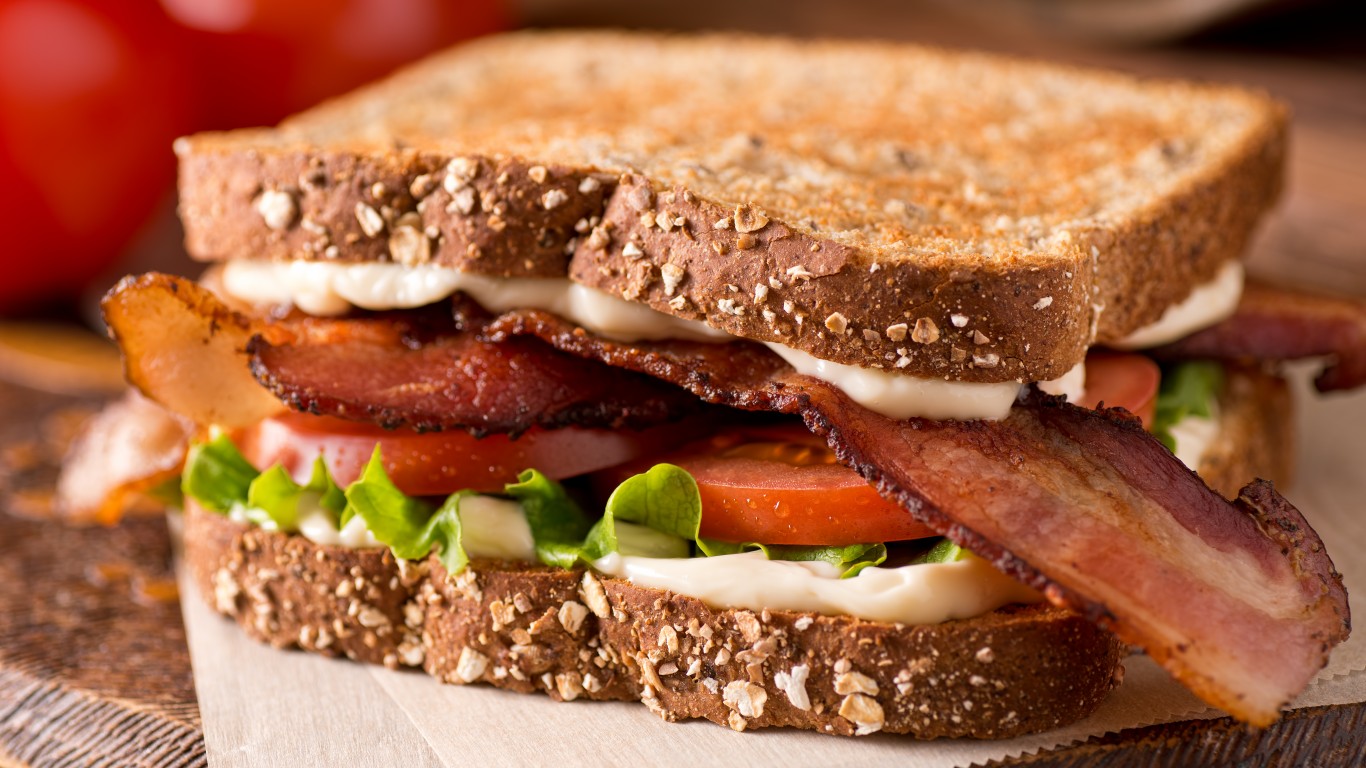
Staying at home all the time and not being allowed to go outside except for essential activities such as doing grocery shopping comes with many challenges, and one of them is how to stay away from the fridge. Whether you are hungry or just bored, the result if often the same — you make yourself a snack. Oftentimes, that snack is a sandwich.
According to one study, we consume as many as 300 million of them a day — a remarkable number, considering that the U.S. population is only about 330 million. We eat them for lunch, sometimes for dinner, frequently for breakfast. (This is the best breakfast sandwich in every state.)
We eat sandwiches cold and hot, filled with meat, seafood, cheese, and more. Some are borrowed from other cultures, such as Vietnam’s bánh mì, or at least inspired by them, like the Cuban or the Italian beef. Some are all-American, like peanut butter and jelly.
Click here to see America’s most iconic sandwiches.
According to the international research data and analytics firm YouGov, the most popular sandwich in America last year was the grilled cheese, with some 79% of survey respondents reporting that they “somewhat like” or “really like” it. (A mere 69% felt the same about the BLT, and only 48% favored the Reuben.) These are 20 of America’s most popular sandwiches.
The nice thing about sandwiches is that, unlike many other kinds of food, they’re usually easy to make if you have the right ingredients. You probably have everything you need for some of them, like PB&J or grilled cheese, in the house right now. Others might require a little targeted grocery shopping, but with only a few exceptions, they’re just standard ingredients arranged between two pieces of bread or in a roll.
What some people might consider the two most popular American sandwiches of all, incidentally — the hot dog and the hamburger — weren’t considered by that YouGov survey, perhaps for good reason: Despite the fact that they would seem to fit the basic definition of a sandwich, many people seem to believe that they belong in a category of their own. The matter has even inspired a “Change My View” Reddit thread headed “Hotdogs and hamburgers are not sandwiches.”
24/7 Tempo has assembled a list of two dozen sandwiches that have become truly iconic in America — childhood favorites, regional specialties, diner essentials, and more — adding up to a vivid, flavorful picture of our sandwich-eating habits. You’ll be able to order a lot of them in for home delivery right now if you want to, but you can also make most of them yourself.

Bánh mì
Banh mi has been called “the world’s favorite sandwich” and “America’s hottest sandwich trend.” A Vietnamese invention influenced by Vietnam’s French colonizers, it’s a hefty concoction of pickled vegetables, fresh herbs, and pâté and/or various grilled meats on a split baguette. Today, it’s found all over America, from Seattle to New York, Los Angeles to New Orleans.
[in-text-ad]
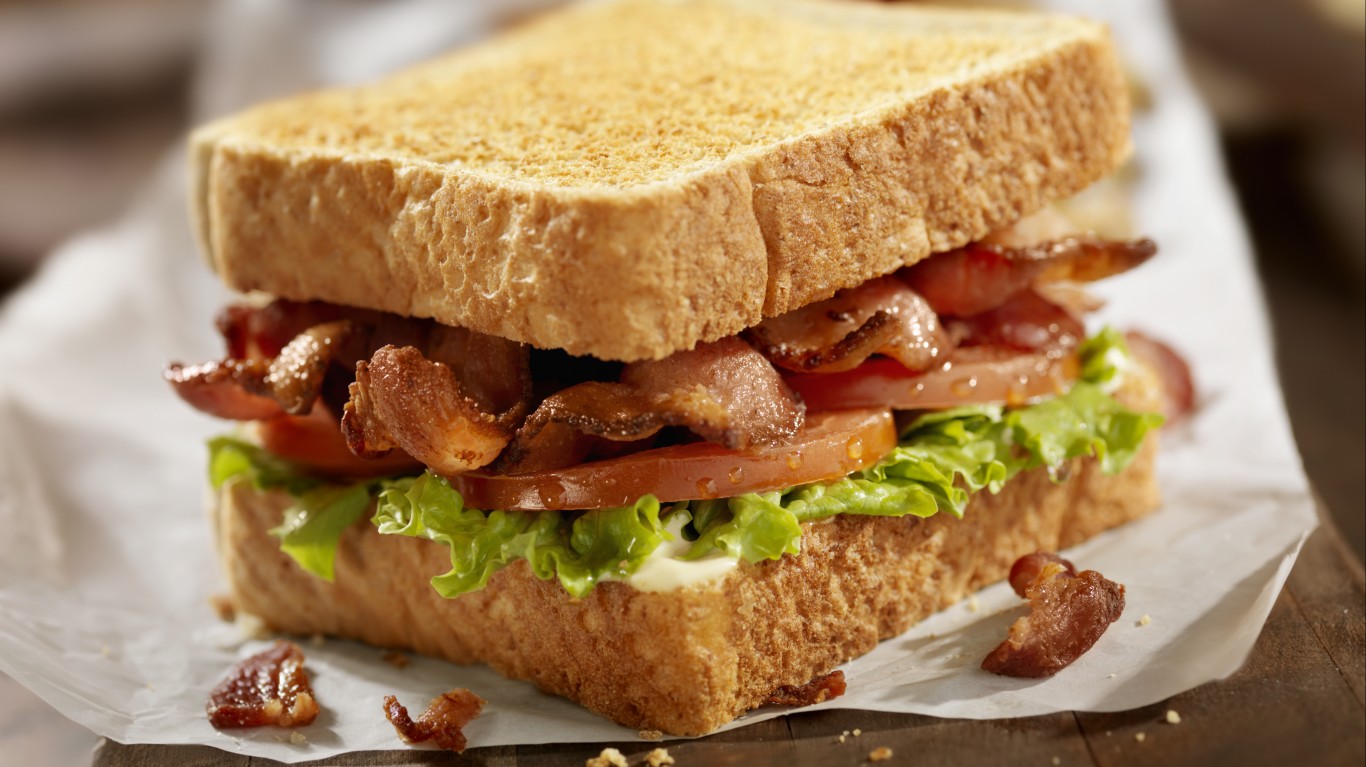
BLT
The bacon-lettuce-and-tomato sandwich — the BLT — is thought to have descended from Victorian-era tea sandwiches. Recipes for something similar appear as early as 1920, though the term “BLT” seems to date from the early 1940s. This popular diner staple is closely related to the club sandwich (see below).
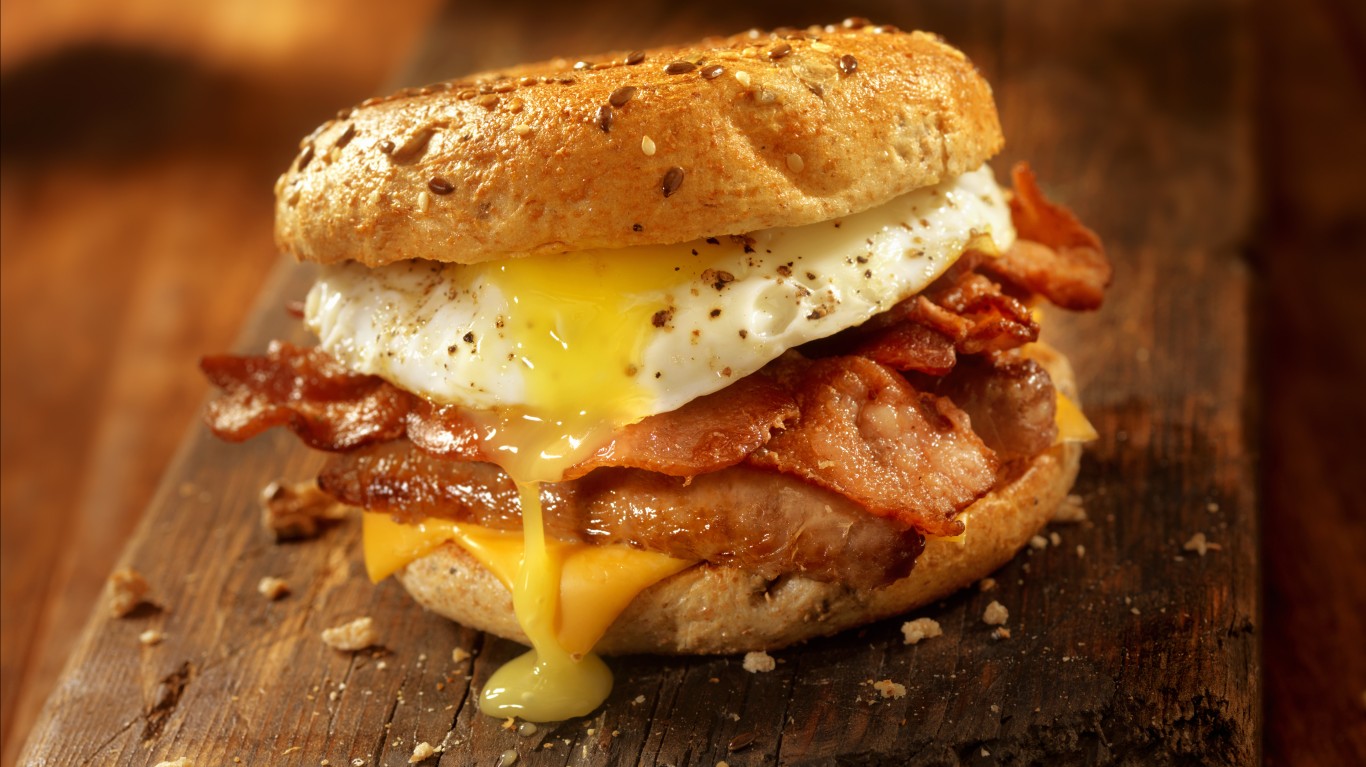
Breakfast sandwich
Pete Wells, the restaurant critic for the New York Times, called the classic breakfast sandwich — eggs, cheese, and either bacon, sausage, or ham on a roll, bagel, English muffin, croissant, or toast — “a hero among sandwiches.” Jack in the Box introduced the first fast-food version of the sandwich in 1969, but it was only after the Egg McMuffin made its debut at McDonald’s in 1972 that its popularity took off and it became an American classic.
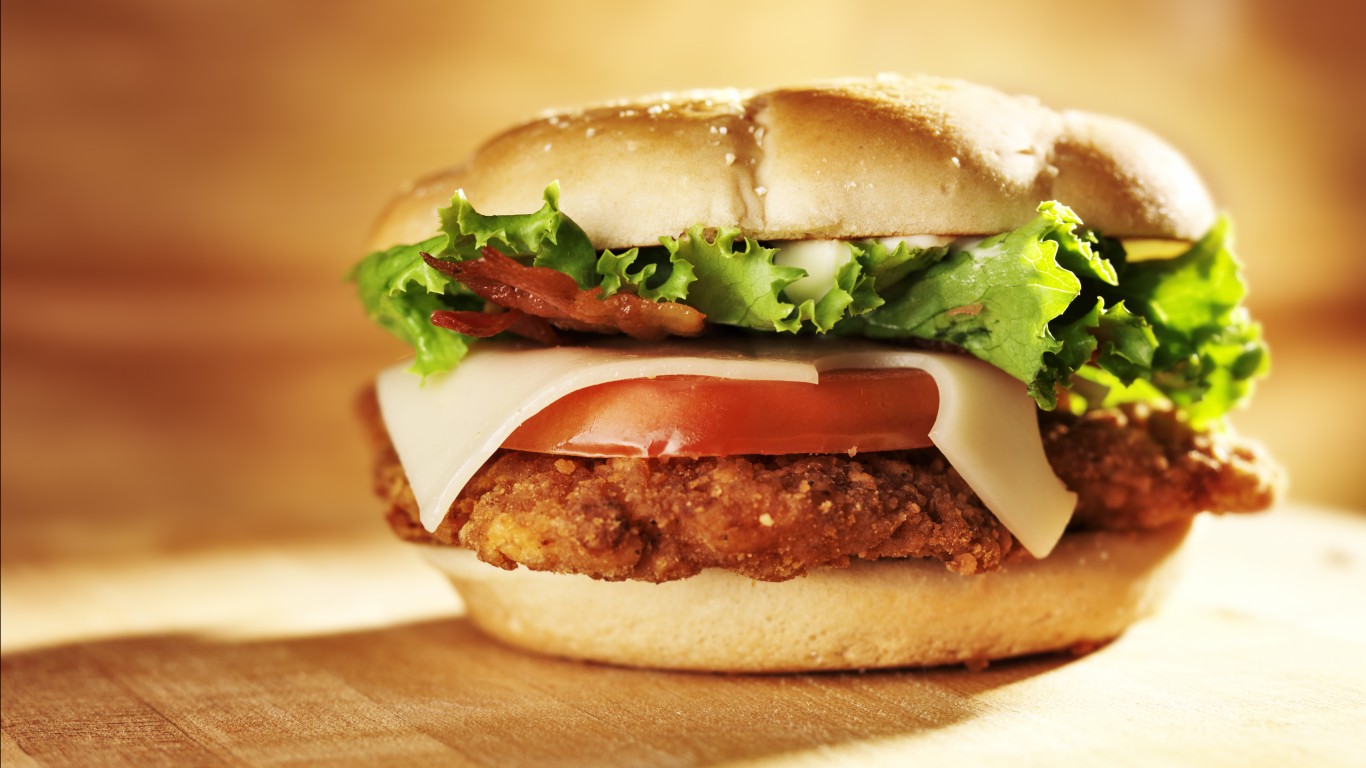
Chicken sandwich
Though people certainly put chicken in some form between a couple of pieces of bread long before 1964, that was the year that an Atlanta restaurateur named S. Truett Cathy patented a sandwich out of boneless breaded fried chicken on a bun and christened it the Chick-fil-A. McDonald’s introduced its version of the sandwich in 1980 (it flopped, but was successfully resurrected in 1988), and today many chains, including the high-end Shake Shack, have their own interpretations. Last summer, the so-called Chicken Sandwich War, pitted a new chicken sandwich introduced by Popeyes against those sold by Chick-fil-A, McDonald’s, and others.
[in-text-ad-2]

Club sandwich
There’s a theory that the name of this popular sandwich — an elaboration of the BLT (see above) found on hotel room service menus everywhere — is an acronym, standing for “chicken under lettuce and bacon.” More likely is the alternate theory that the name is short for “clubhouse sandwich,” so named because it was first made at the Saratoga Club House (a gambling den in Saratoga Springs, New York) or possibly the Union Club in New York City. Often constructed as a triple-decker, it is sometimes made with turkey instead of chicken, and ham may be added to either version.
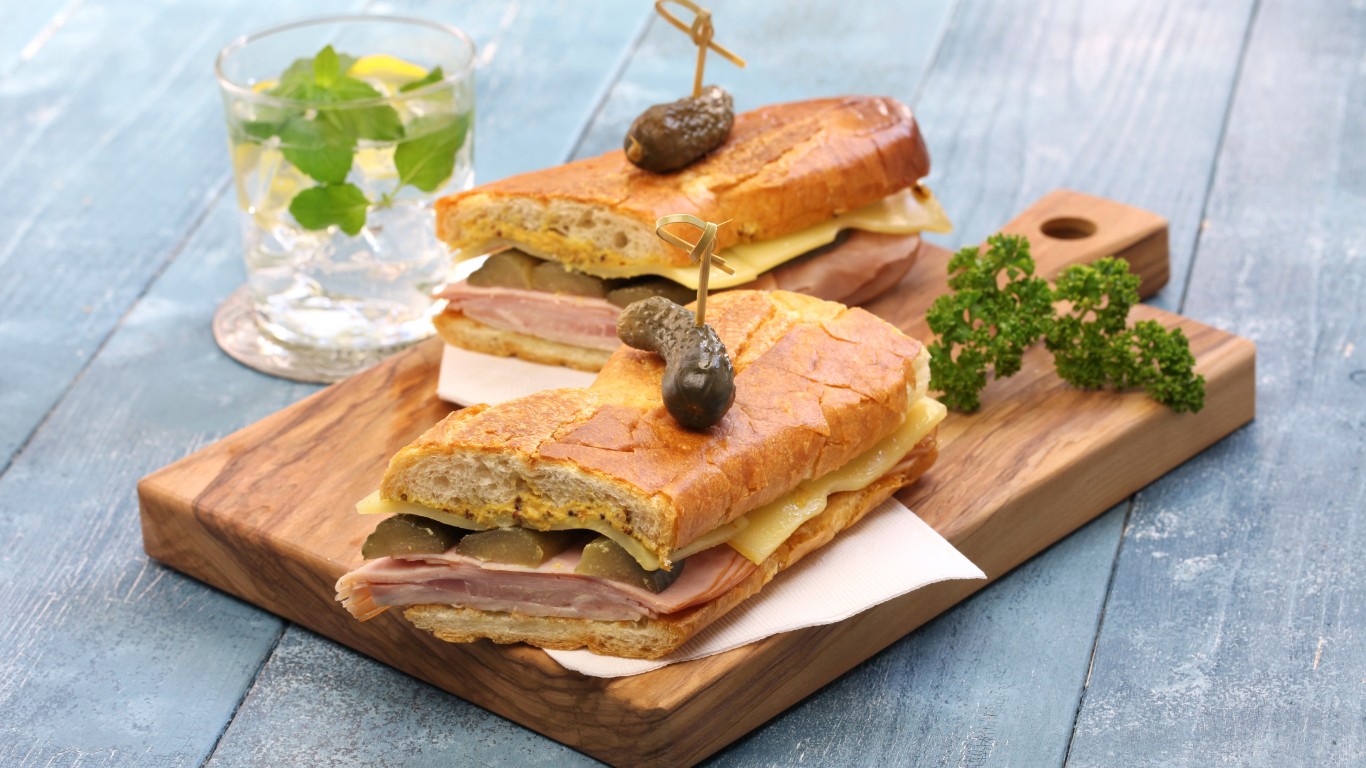
Cuban sandwich
Pork, ham, salami (sometimes) Swiss cheese, dill pickles, and mustard on crusty Cuban bread — that’s the Cuban sandwich. As with many sandwiches — many dishes in general — its history is hazy. What’s almost certain, though, is that it doesn’t come from Cuba. Instead, it was developed by Cuban cigar factory owners in the Ybor City neighborhood of Tampa, Florida, probably in the late 1800s. In 2012, it was officially named Tampa’s signature sandwich by the city council.
[in-text-ad]
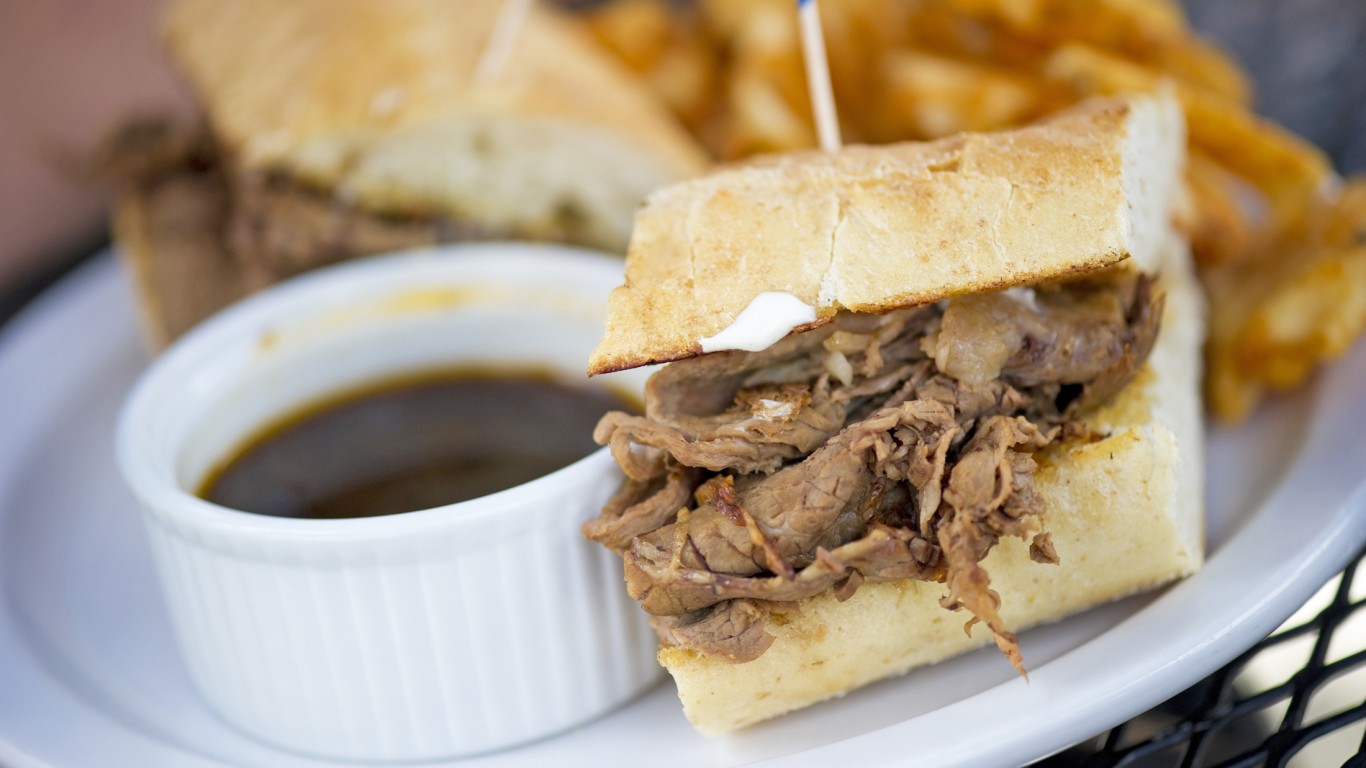
French dip
The French dip — thin-sliced roast beef or other meat on a long French roll whose cut sides have been dipped into the roasting pan juices — was invented in Los Angeles by a Parisian, one Philippe Mathieu. The story is that one day in 1918, a decade after he’d opened his sandwich shop in downtown L.A., Mathieu accidentally dropped a roll into the roasting pan while he was making a sandwich for a local policeman. The cop ate the sandwich anyway, and liked it so much that he came back the next day with his buddies for more. Now you can get French dips all over the country — but Philippe’s is still going strong.
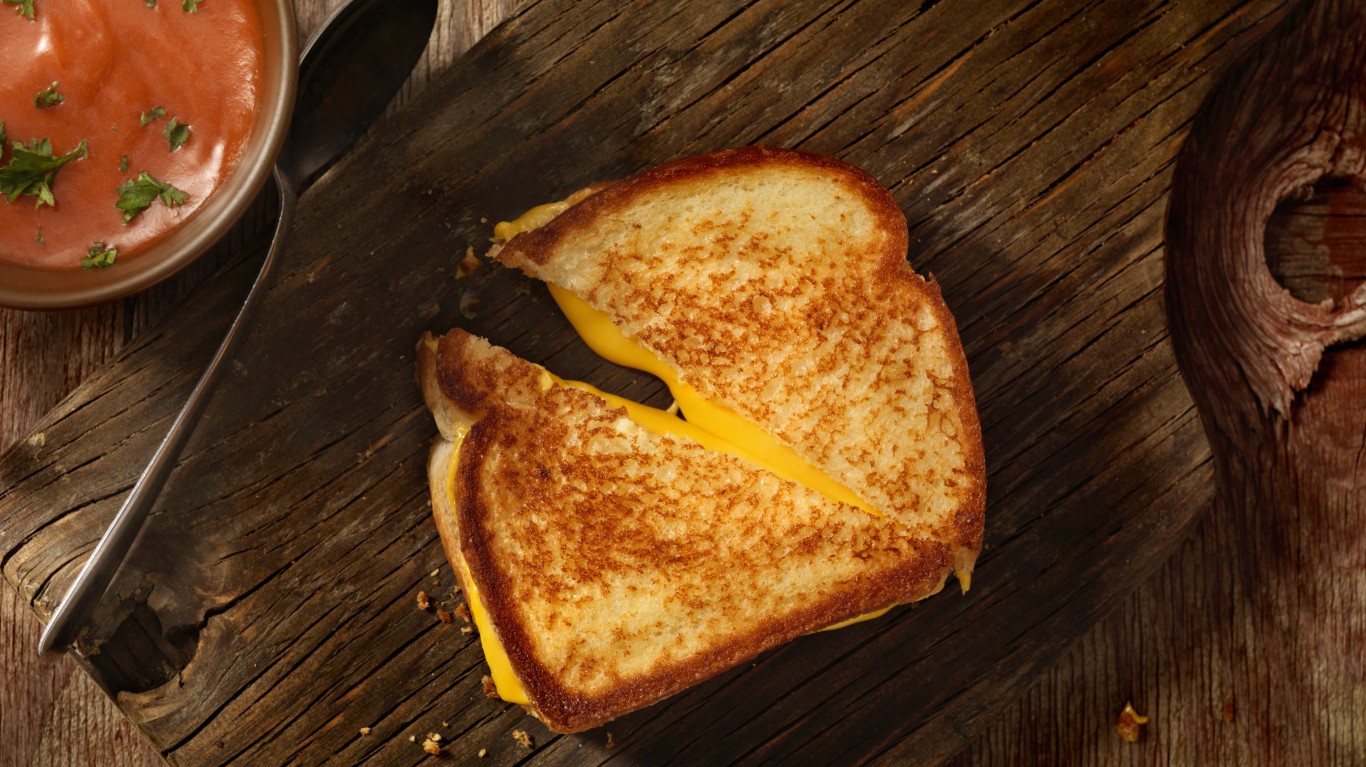
Grilled cheese
Bread and cheese heated together is an idea that goes back at least to Roman times. The term “grilled cheese,” though, dates only from around the 1930s, and may have coincided with the introduction of the electric sandwich grill (invented by Thomas Edison). While some purists insist that the sandwich should be made with white bread and American cheese, other recipes call for a variety of cheeses (sometimes combined), breads, and additions — from bacon and tomato to roast beef or macaroni and cheese. The popular combination of grilled cheese sandwiches and tomato soup was apparently invented in school cafeteria kitchens during the Depression.

Gyro
A staple of lunch carts in many cities, the gyro is a Greek-American sandwich (possibly invented in New York City) consisting of thin-sliced or shaved meat cooked on a vertical spit, served on pita bread, often with shredded lettuce and chopped tomato and a white yogurt-based sauce of some kind. Related to the shawarma of the Middle East and the döner kebabs of Turkey, the gyro — pronounced “YEE-ro” (the term comes from the Greek word for “spin,” a reference to the spit) — the original gyro meat was lamb. Today, it’s likely to be a composite of beef, lamb, breadcrumbs, and spices, pressed into cylinders.
[in-text-ad-2]

Hot Brown
A specialty of Louisville, Kentucky, the Hot Brown was invented in the kitchen of the city’s Brown Hotel in 1926. It’s basically an open-faced sliced turkey sandwich on thick Texas toast, enhanced with bacon, tomatoes, and Mornay sauce (a creamy Béchamel sauce with shredded cheese melted in). The hotel dining room is said to serve about a thousand of the sandwiches per week, and it’s also available at more than 40 other restaurants in Louisville — as well as numerous other venues around the country.
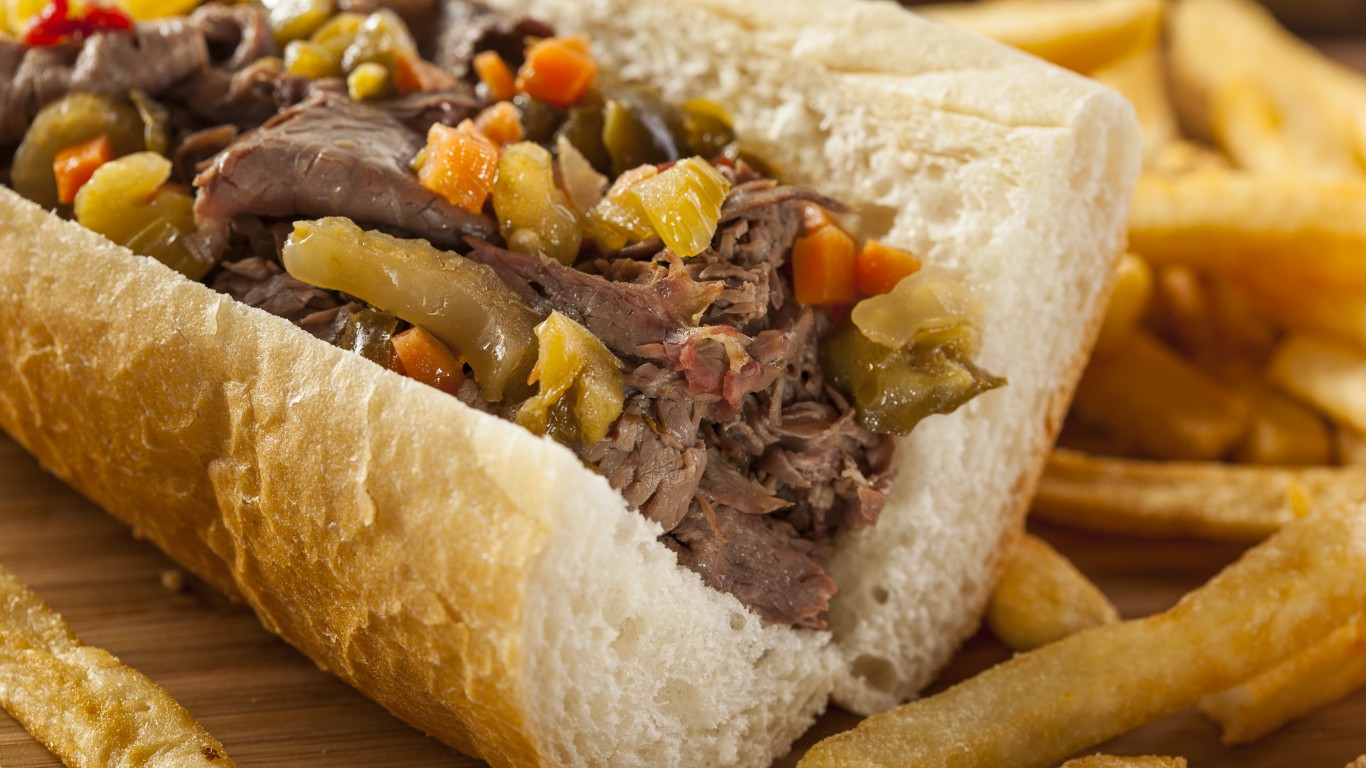
Italian beef
Somewhere between the submarine sandwich (see below) and the French dip (see above) is this Chicago invention, dating from the 1930s, is composed of shaved roast beef, giardiniera (Italian pickled vegetables), sweet peppers, and beef gravy on an Italian roll. Its name notwithstanding, nothing similar exists in Italy. While the sandwich is still known mostly in the Midwest, it may now be found in other parts of the country, too. For instance, one major Italian beef chain, Portillo’s, now has branches in Florida, Arizona, and California.
[in-text-ad]
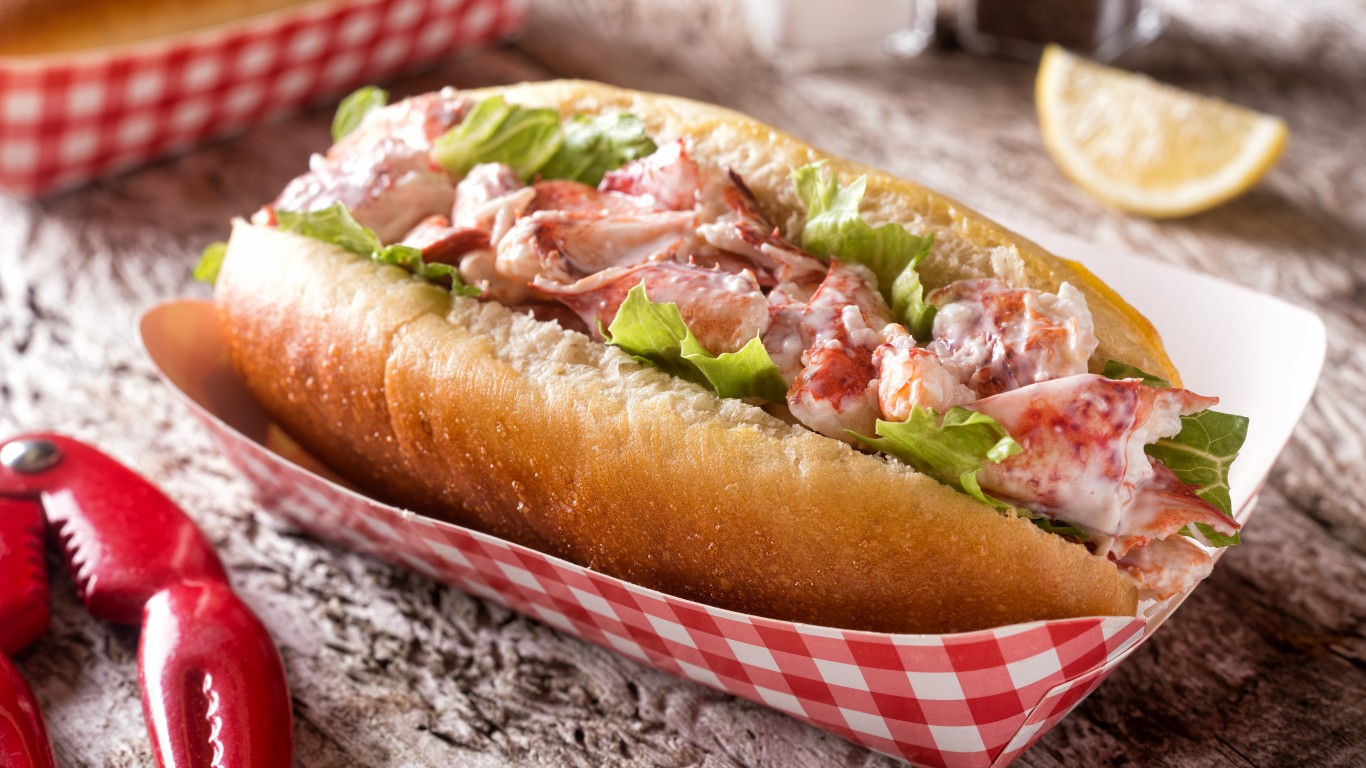
Lobster roll
Though it is strongly associated with Maine — considered America’s lobster capital — the first lobster roll was apparently served at a restaurant in Connecticut, back in 1929. Fans distinguish between two varieties of the sandwich: a Connecticut lobster roll consists of chunks of lobster meat served warm on a buttered hot dog or hamburger bun; the Maine version is made with cold lobster meat dressed with mayonnaise, sometimes mixed with scallions, chives, celery, and/or tarragon, and is traditionally served in the crevice of a split-top hot dog bun.
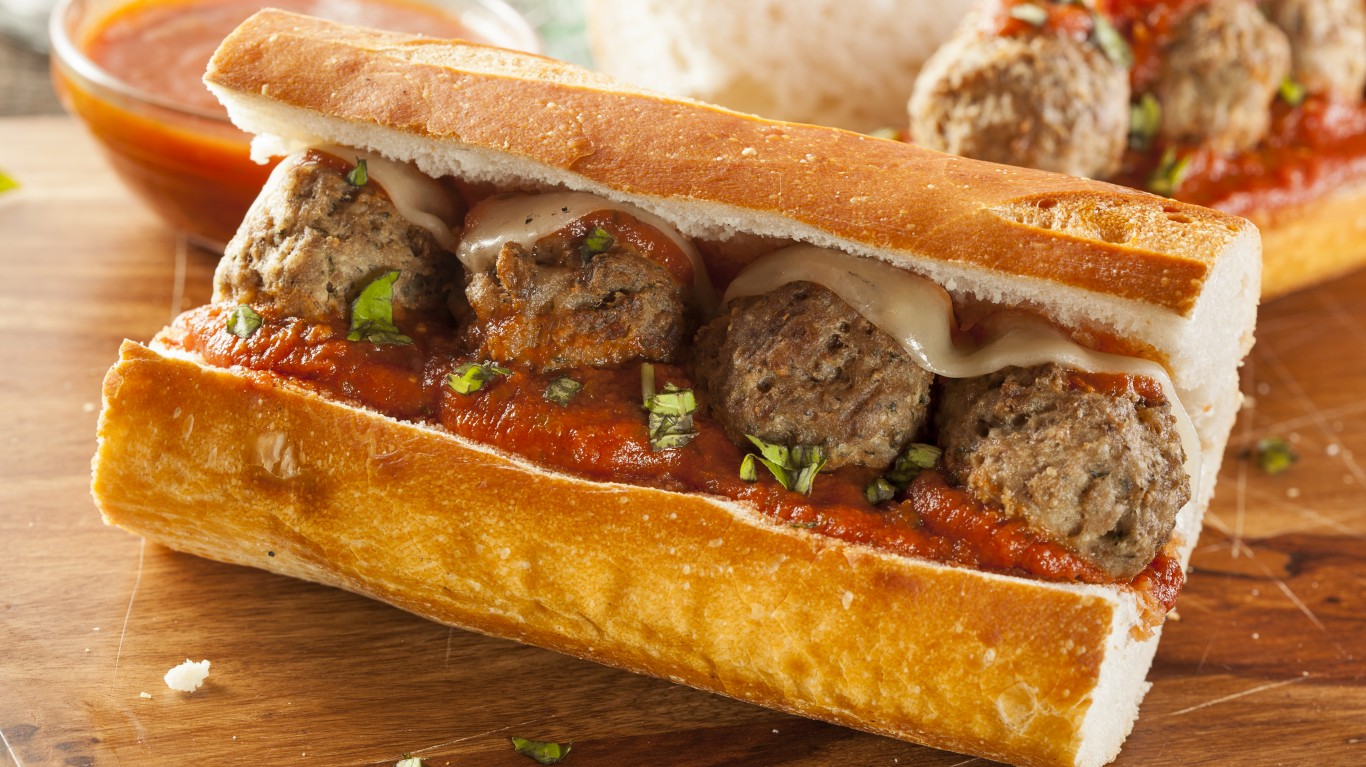
Meatball sandwich
In Italy, meatballs are served as a main course, not with pasta — much less in a sandwich. The meatball sandwich, a variation on the submarine sandwich (see below), is just what it sounds like: an Italian roll filled with meatballs, almost always in a tomato sauce, with provolone or mozzarella usually added. A standard offering at sandwich shops and Italian-American delis, it was probably first made around the turn of the 20th century.
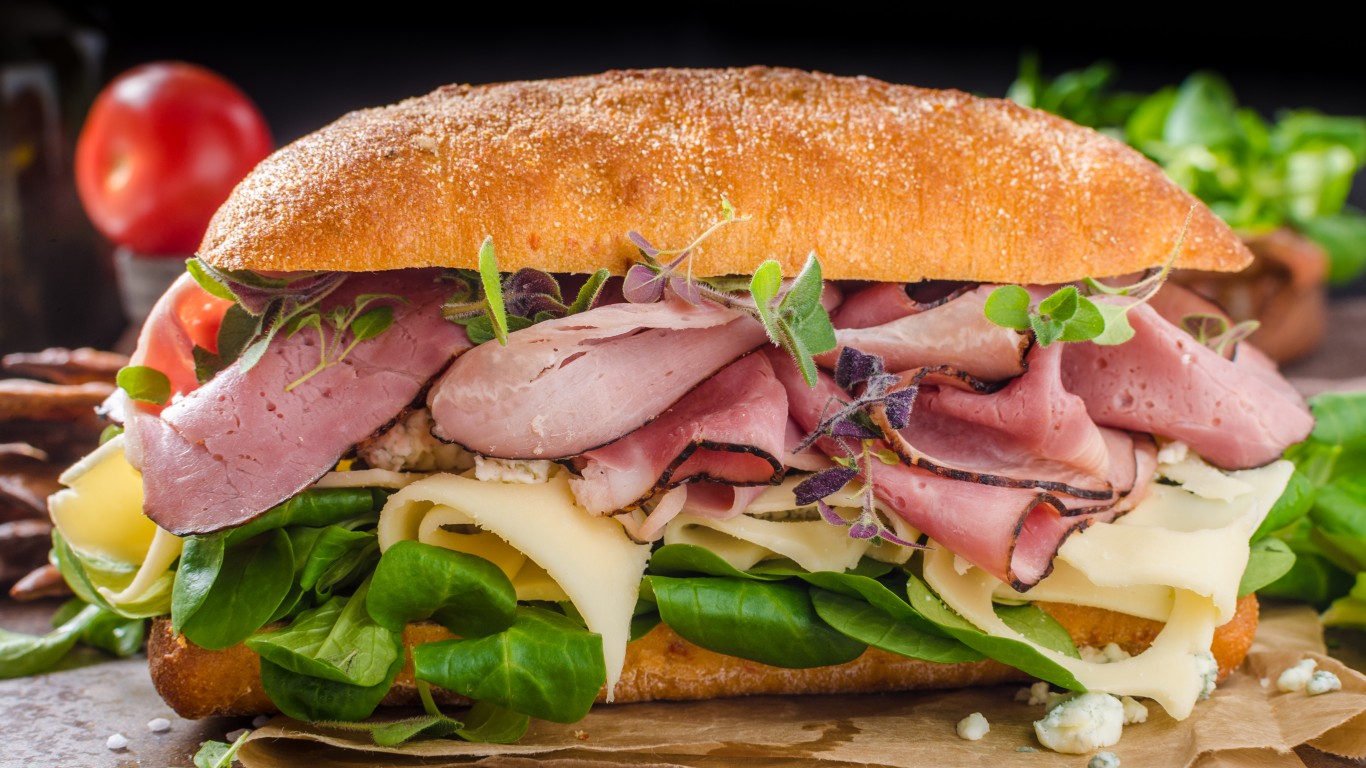
Monte Cristo
Though it can be hard to find today, there was a time in the mid-20th century when this curious sandwich appeared on menus at coffee shops and tea rooms all over America. Almost everybody agrees that it was invented in California — possibly in San Francisco, possibly at the Hotel del Coronado near San Diego. It’s a double- or triple-decker sandwich of sliced ham, chicken, and Swiss cheese, held together by toothpicks, dipped in an egg batter and fried in butter to a golden-brown hue. It is usually dusted in powdered sugar and served with jam.
[in-text-ad-2]

Muffuletta
This specialty of New Orleans is like a more elaborate Italian-style submarine sandwich (see below), round instead of elongated. Said to have been invented at Central Grocery in the French Quarter, it apparently grew out of the casual lunches Sicilian-born farmers would eat after selling their produce at the nearby market. It consists of a round loaf of slightly spongy bread almost a foot in diameter, filled with salami, prosciutto, and/or sometimes other Italian deli meats, along with sliced cheese (usually provolone), olive salad, garlic, and sometimes the pickled vegetables called giardiniera.

Pastrami on rye
Pastrami is an American version of the salted, wind-dried beef known as pastrama or basturma in Armenia and the Balkans. It’s smoked and cured, with spices that typically include garlic, pepper, paprika, and allspice, among others. The first pastrami in America seems to have been served in New York City in the late 19th century by a Lower East Side deli owner from Lithuania named Sussman Volk — and he was apparently the first to heap slices of it onto rye bread. The delis of Manhattan’s theater district are said to have popularized it in the 1920s and ’30s, and today it is as much a deli essential as the Reuben (see below).
[in-text-ad]

Peanut butter and jelly
Peanut butter as we know it today dates from the late 19th century (one pioneer in its production was John Harvey Kellogg of cereal fame), and the first recipe for the sandwich popularly known as the PB&J was published in 1901. With the advent of sliced bread in the late 1920s and the proliferation of commercial peanut butter brands, it became popular nationwide. The fact that it was easy and cheap made it a favorite during the Depression, and it was included on military menus during World War II before becoming the ultimate school lunch and after-school snack for millions of American kids.
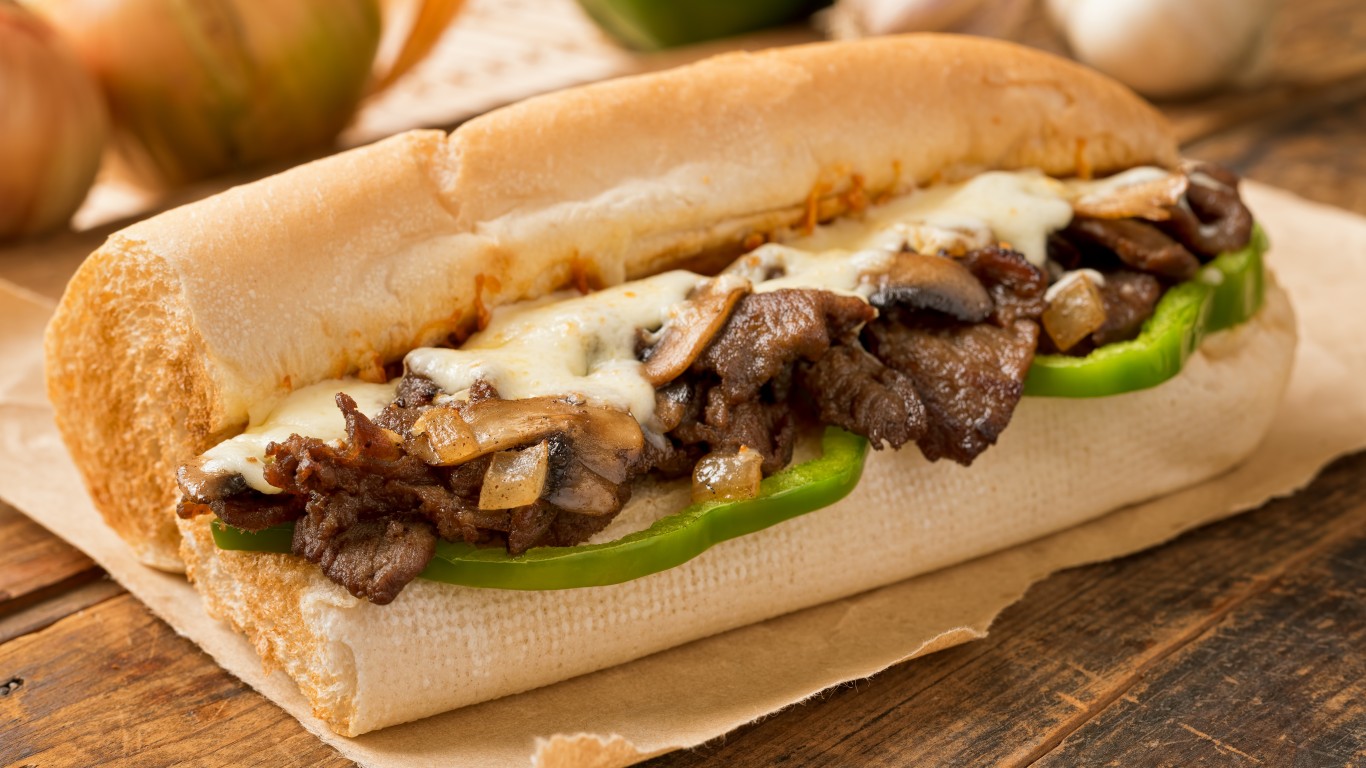
Philly cheesesteak
According to Philadelphia’s official tourist site, VisitPhilly, this now ubiquitous sandwich was invented in 1930 by a Philadelphia hot dog vendor named Pat Olivieri — namesake of Pat’s King of Steaks, one of the city’s most famous purveyors of cheesesteaks today. In its simplest form, the sandwich is thinly sliced beef and melted cheese on a submarine-style roll, with or without fried onions, mushrooms, and/or sweet or spicy peppers. The cheese is often the processed cheese sauce called Cheez Whiz, but may also be American or provolone.
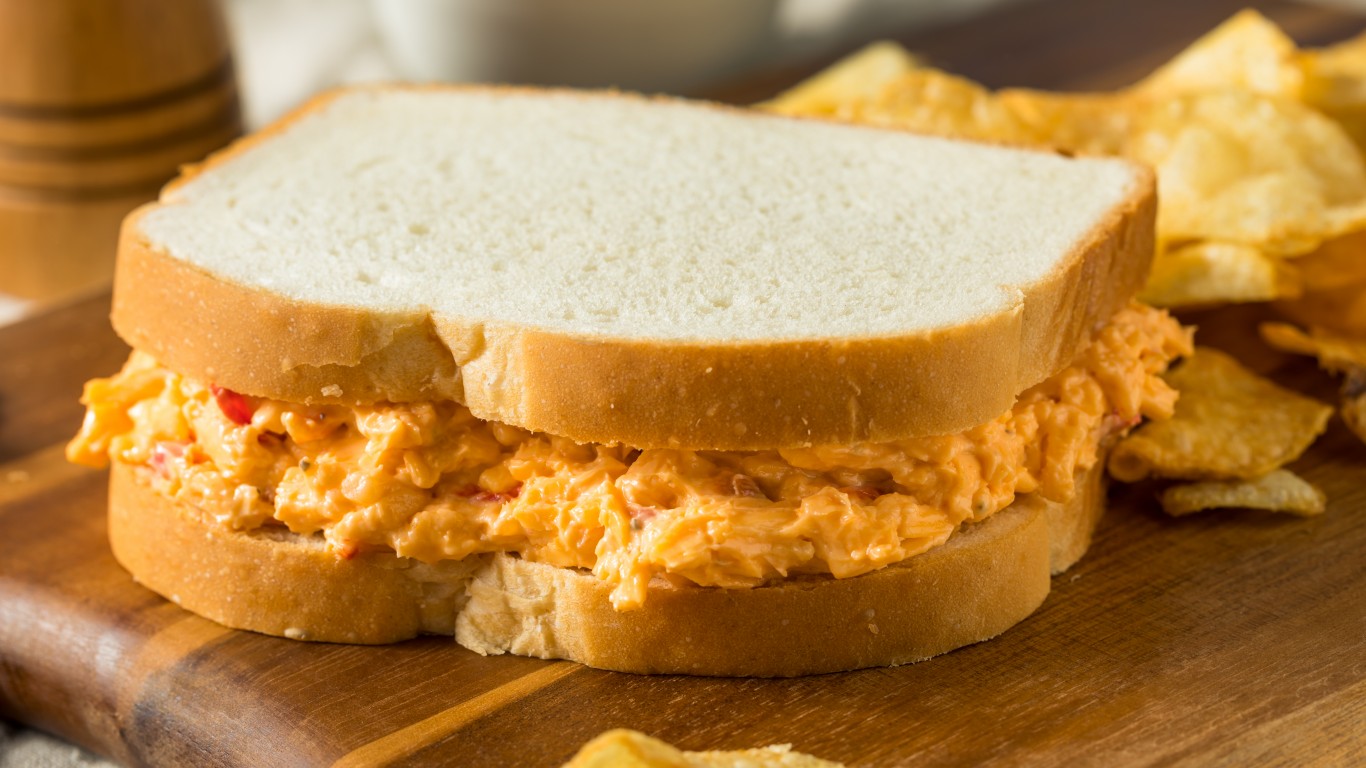
Pimento cheese
Pimento cheese — the so-called “pâté of the South” — is a cheese spread flecked with bits of red pimento (or pimiento) pepper. What kind of cheese and what else goes into the mix is the subject of much discussion. Some say it’s nothing but cheddar, pimentos, and mayonnaise. Others might add some combination of cream cheese, Monterey jack, garlic, Tabasco sauce, lemon juice, and/or plain cream. Like other sandwich spreads, pimento cheese became popular during World War I as an easy, expensive ingredient to feed troops in the field and their supporters at home. The sandwiches, usually just pimento cheese spread thickly on white bread, are still popular picnic (and funeral) fare in the South.
[in-text-ad-2]

Po’boy
Legend has it that the po’boy was invented by a couple of charitable brothers in New Orleans in 1929 to feed striking streetcar workers (“poor boys”) for free. The po’boy is yet another variation on the submarine (see below), but traditionally made with French bread loaves with a firm crust rather than the soft-crust Italian-style rolls most of its counterparts employ. The name “po’boy” refers to the form, not the contents. The sandwich may be made with anything from roast beef to fried shrimp (the most common fillings), but fried oysters, crawfish, soft shell crabs, or catfish; sausage, ham and various other luncheon meats; even hamburgers can go into the sandwich. Condiments might include some combination of lettuce, tomato, pickles, mustard, ketchup, butter, and mayonnaise.
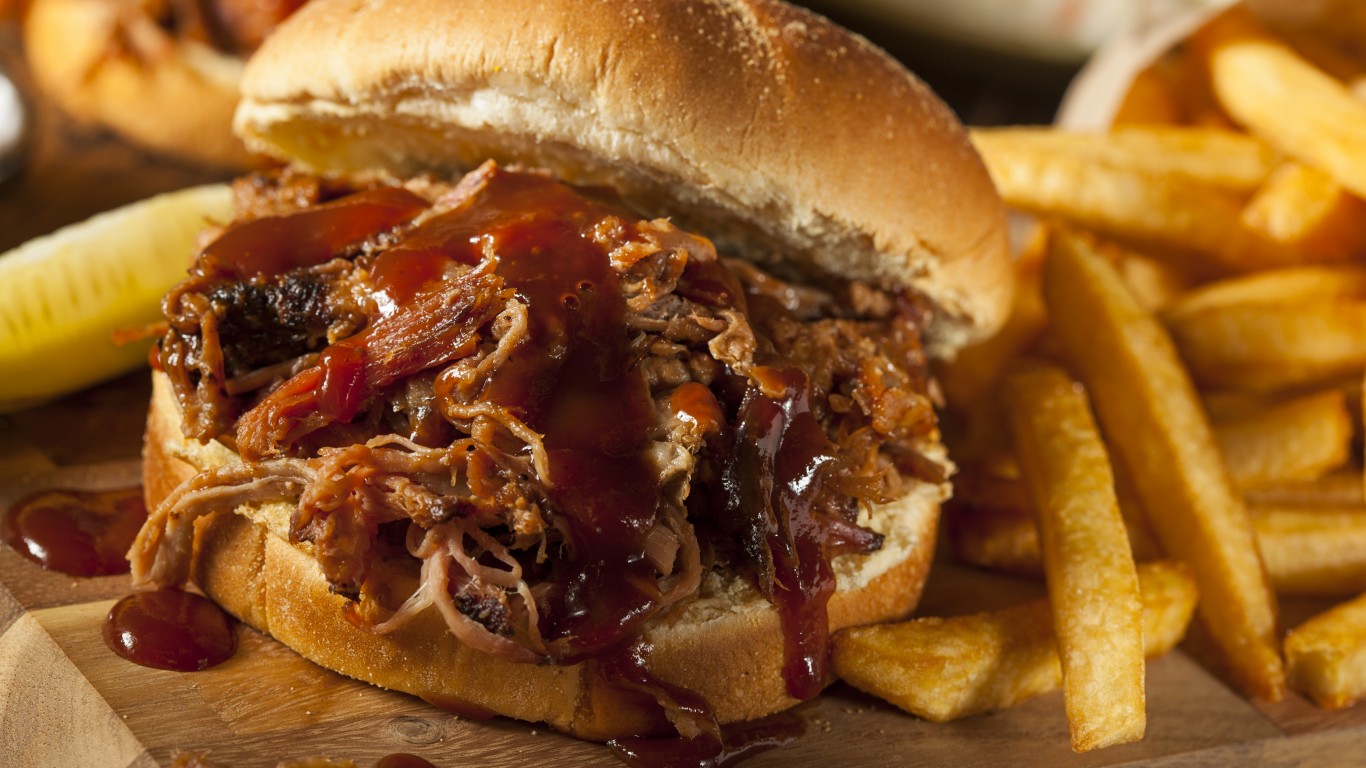
Pulled pork
Pulled pork, a barbecue staple, is meat (often pork shoulder) that’s been long-smoked, then pulled apart into shreds. It’s not certain who first decided to make a sandwich out of it, but credit sometimes goes to Leonard Heuberger of Leonard’s barbecue pit in Memphis, who put the meat, along with barbecue sauce and coleslaw on a bun in the 1920s. The sandwich is also widely associated with North Carolina, though barbecue joints all over America serve it today.
[in-text-ad]
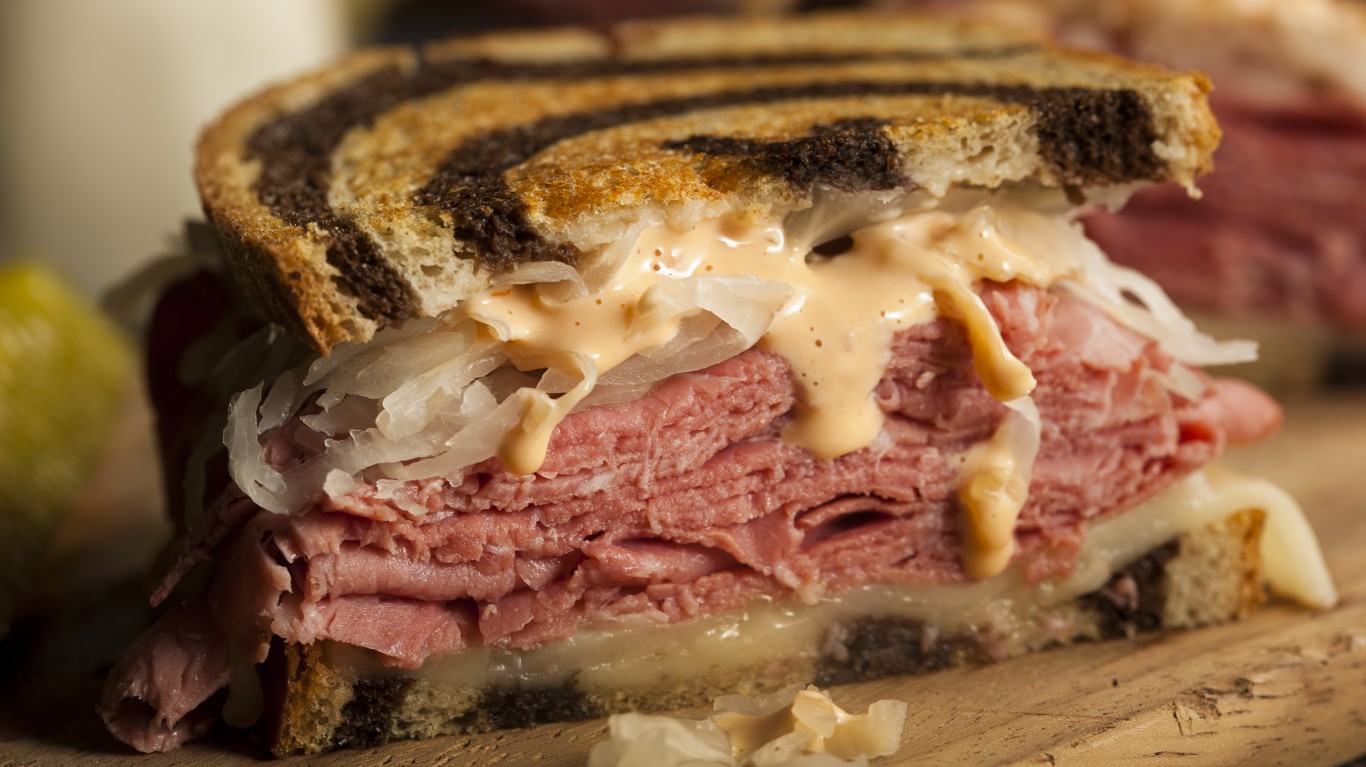
Reuben
The deli classic known as the Reuben sandwich — corned beef, Swiss cheese, sauerkraut, and Russian dressing on rye bread — was named for a man called Reuben. Which man called Reuben is a matter of some debate. Most sources say that it’s Arnold Reuben of Reubens Restaurant and Delicatessen, who is said to have created the sandwich in 1914 (however, his original was made with baked ham and roast turkey instead of corned beef). An alternate theory cites Reuben Kulakofsky, co-owner of the Central Market in Omaha, who may have invented it in 1925 to feed his poker buddies. Either way, it has become one of the most famous of all American sandwiches.
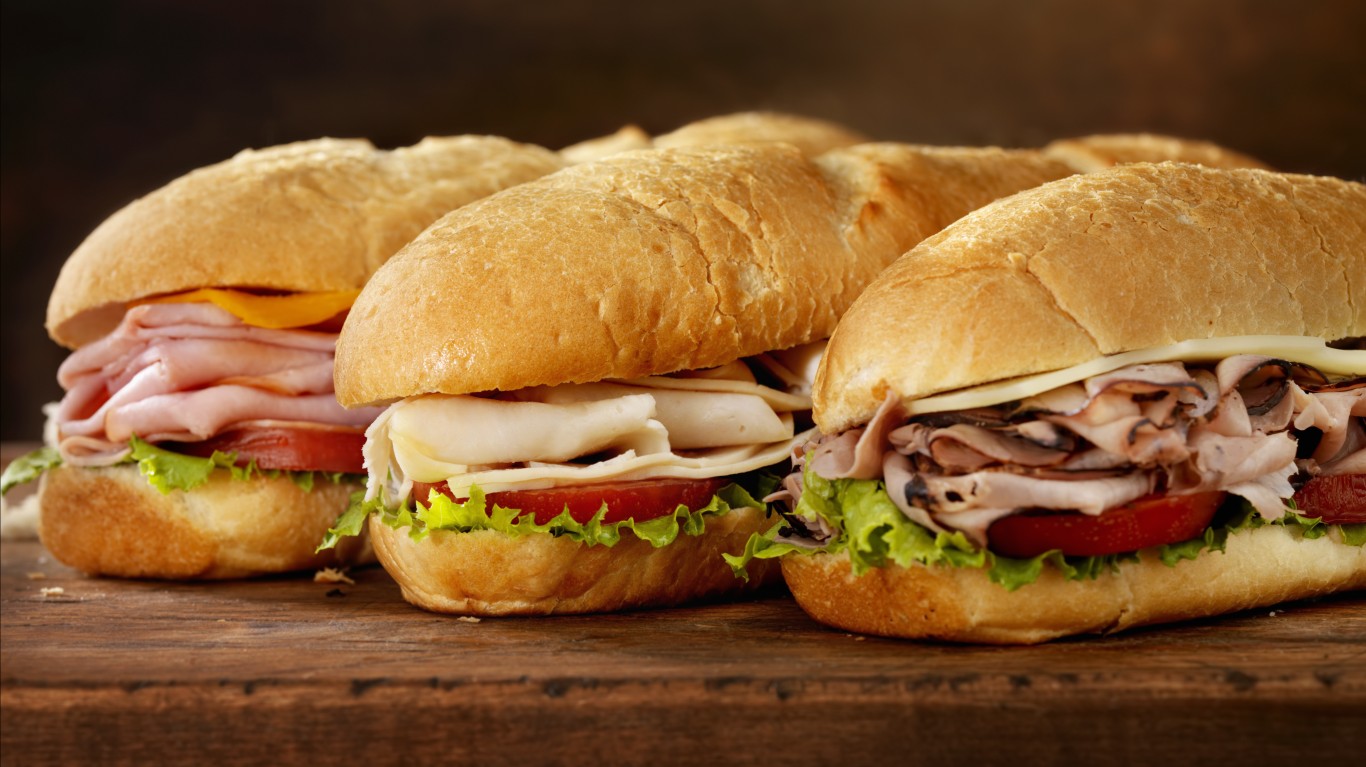
Submarine
No other sandwich goes by as many different names — submarine, sub, hero, hoagie, grinder, wedge, torpedo, etc., etc. The original version, involving salami, cheese, pickled peppers, and olives, piled into a long, soft Italian-style roll dressed with olive oil, was probably introduced to America in the early 20th century by Italian immigrant laborers. As it became popular beyond the Italian community, such ingredients as roast beef, sliced turkey, American-style cheeses, lettuce and tomato, and mayonnaise or mustard were added. Bánh mì, the Philly cheese steak, Italian beef, the po’boy, and the meatball sandwich (see above for all of these) are variations on the theme.

Tuna melt
Canned tuna is the second-most-popular form of seafood in the country after shrimp, and Americans eat about 1 billion pounds of canned (including pouched) tuna annually. One of the most common ways to use canned tuna, of course, is in mayonnaise-bound tuna salad. And one of the most popular ways to eat tuna salad is in a tuna melt — an open-faced sandwich in which a tuna salad has been topped with cheddar or some other cheese and passed under the broiler (sometimes it is reassembled as a conventional sandwich after this process). References to open-faced tuna sandwiches topped with melted cheese date back at least to 1946, but the tuna melt as we know it probably dates only from the 1970s.
Find a Qualified Financial Advisor (Sponsor)
Finding a qualified financial advisor doesn’t have to be hard. SmartAsset’s free tool matches you with up to 3 fiduciary financial advisors in your area in 5 minutes. Each advisor has been vetted by SmartAsset and is held to a fiduciary standard to act in your best interests. If you’re ready to be matched with local advisors that can help you achieve your financial goals, get started now.
Thank you for reading! Have some feedback for us?
Contact the 24/7 Wall St. editorial team.
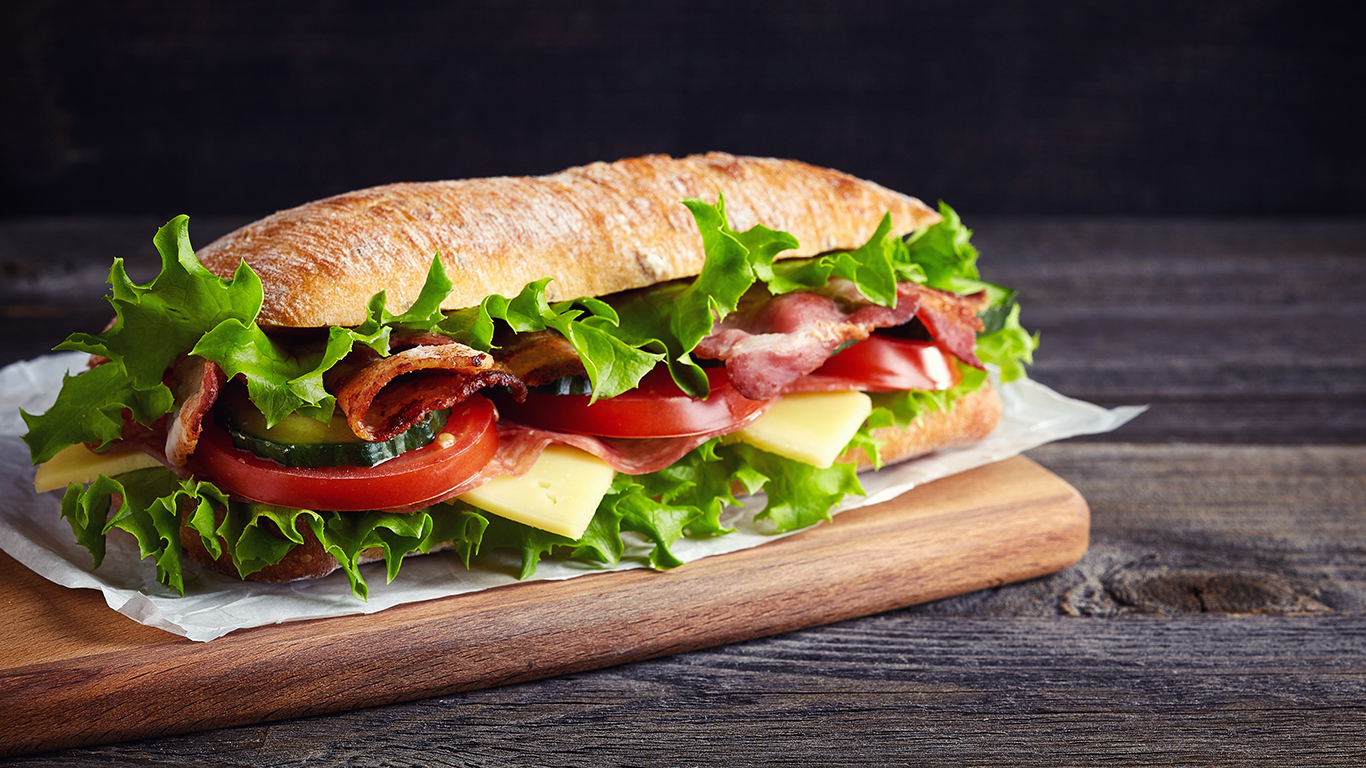 24/7 Wall St.
24/7 Wall St. 24/7 Wall St.
24/7 Wall St.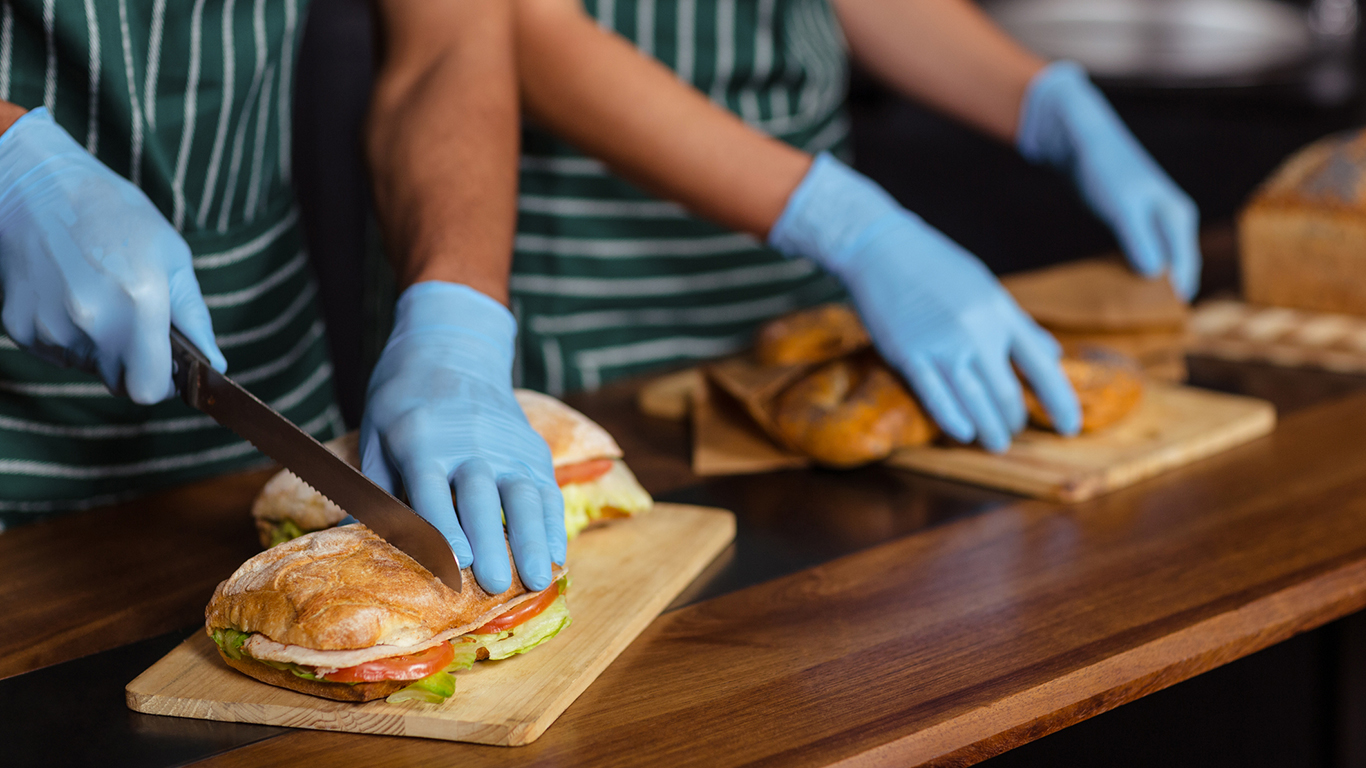 24/7 Wall St.
24/7 Wall St.


